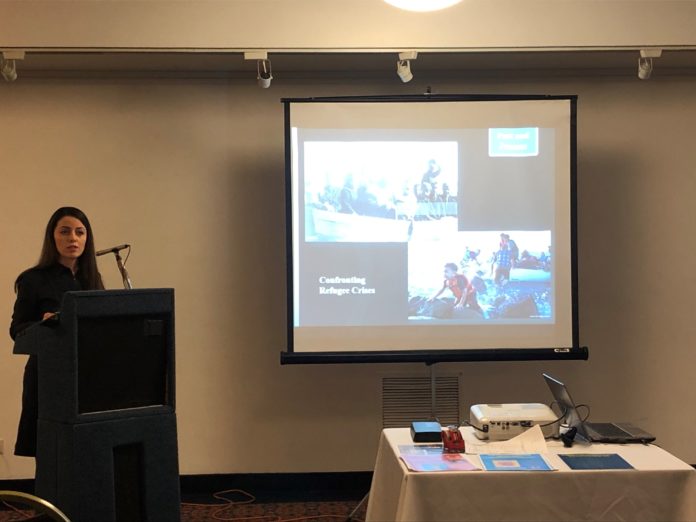By Florence Avakian
NEW YORK — The displacement of refugees has been an international concern in recent years. A talk at the Eastern Diocese’s Krikor and Clara Zohrab Information Center looked at a similar humanitarian emergency from a century ago, which developed at the Caucasus front following the Armenian Genocide.
Asya Darbinyan spoke on the subject on Thursday, January 17, at the Diocesan Center. She was introduced by Zohrab Center Director Dr. Christopher Sheklian, who detailed her background as a doctoral candidate at the Strassler Center for Holocaust and Genocide Studies at Clark University in Worcester, Mass.
To begin her talk, Darbinyan noted how a century ago, the Armenian writer Hovhannes Toumanyan recorded his observations after arriving in the town of Echmiadzin to help to the thousands of Armenians fleeing across the Ottoman border of Transcaucasia.
“In that hell called Turkish Armenia,” he wrote, “three armies exist. The first is the one in combat. The second is the army of the abandoned women and children, the sick, the famished, the naked, the refugees which is the largest army. And third is the army of activists and helpers which is the smallest and weakest.”
Between 1914 and 1917, thousands of Armenian refugees escaping from Turkey across the border to Transcaucasia came from Kars, Igdir and Julfa. Two-thirds of them were women, since most of the men had been slaughtered. More than 200,000 refugees from Turkey had reached the Caucasus between July and August 1915. Upon arrival, they were accommodated in Yerevan, Elizavetpol, Tiflis and Kars.








